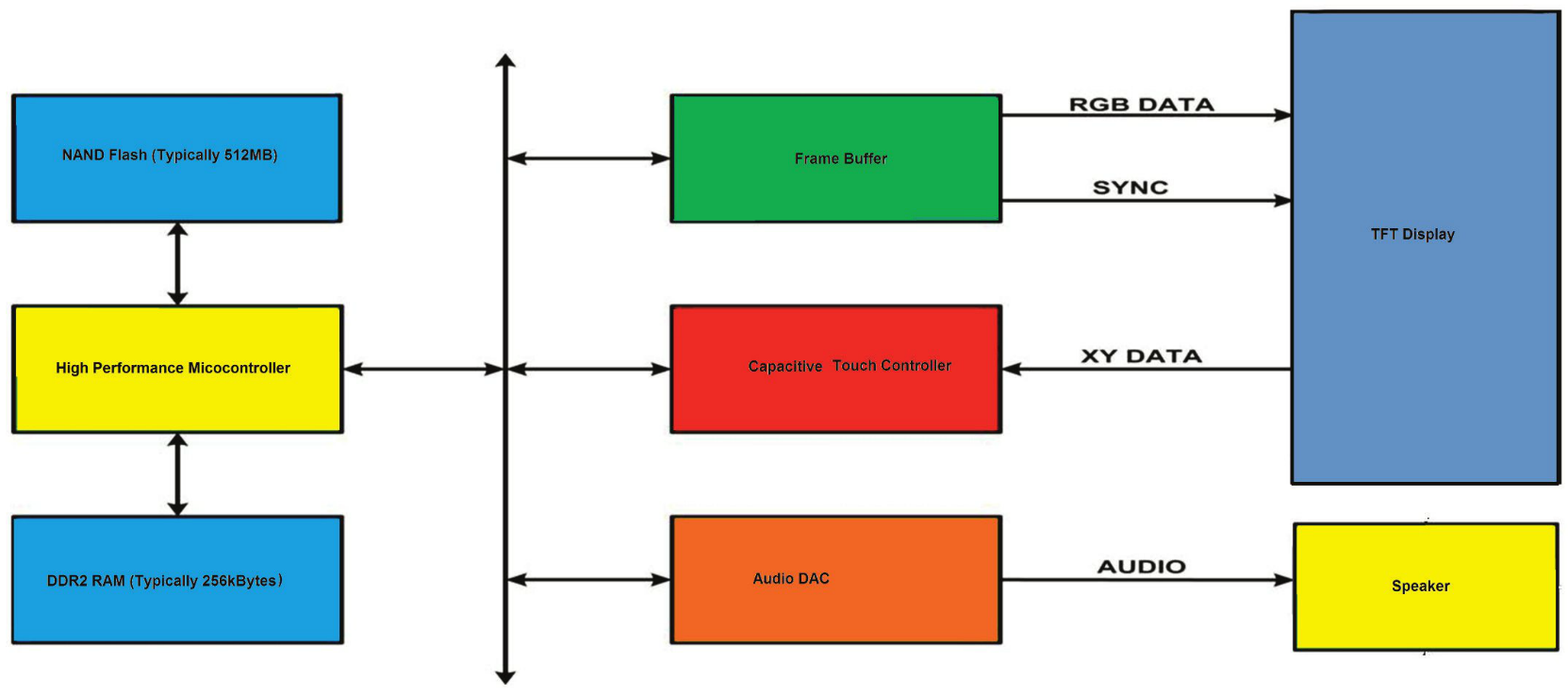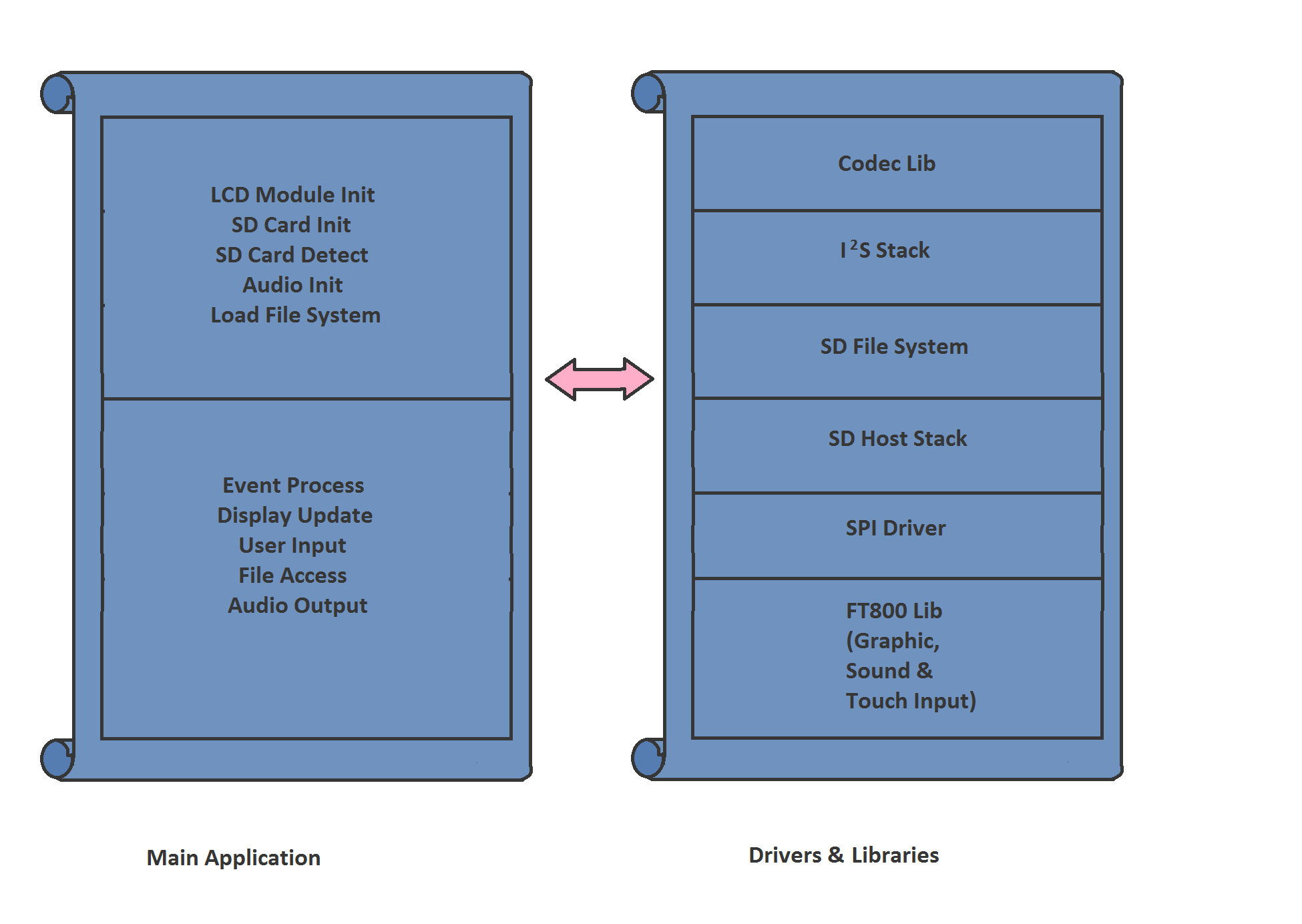Integrated & optimised ASSPs shorten design cycles
A reference design demonstrates how closely integrated and optimised ASSPs can help shorten design cycles, even when a bespoke user interface is needed. By Dave Sroka, FTDI Chip.
There is now a plethora of multimedia applications that call for the streaming of high speed data. Engineers face the challenge of attaining the performance levels that such applications stipulate while simultaneously keeping component count low, board space utilisation to a minimum and overall implementation costs reigned in as much as possible, in addition to ensuring that there are no time-to-market delays that could mean that lucrative opportunities are missed and rival’s products which are introduced sooner get a commercial edge.
High data rate system designs of this kind, often with touch functionality, are becoming increasingly reliant on a very small number of highly integrated ICs which each have a large quantity of on-chip functionality, so that board space, power and development budget can all be conserved. The MP3 player system shown in Figure 1 is an example of this - employing a highly performance 32-bit microcontroller and an advanced graphic controller IC.

Figure 1: Schematic of an MP3 player system based on a FT900 microcontroller and an FT800 graphic controller
The microcontroller specified in Figure 1, is the recently released FT900 application-oriented controller (AOC) alongside the FT800 embedded video engine (EVE) graphic control device with an integrated touch controller. The system basically consists of an FT900 add-on card and VM800B50A-D development module (with an FT800 at its heart). These are connected together via a SPI interface. The system works on a single 5VDC power supply from a Micro USB connector on the add-on board. The FT800’s built-in touch functionality and sound synthesising capabilities, along with the FT900 built-in SD controller and I2S interface make the system implementation much simpler. As a result, only a few external components are needed.
The external I2S codec module has the ability to provide high quality headphone and line output or alternatively it can be used to connect to an external audio amplifier. The codec module also supplies the audio mixer for synthesis sound from FT800 and MP3 stereo audio from the FT900’s I2S interface. The module is able to drive a stereo headphone directly. The line output can be used to connect to an audio amplifier.
The FT900’s proprietary FT32 core, which can run at clock speeds of up to 100MHz and has a zero wait state program memory, is capable of delivering as much as 281DMIPs of processor performance. This core allows the FT900 to take care of the audio processing, while the accompanying FT800 deals with the touch control and graphic rendering tasks.
Key elements
The constituent parts of the MP3 player firmware are shown in Figure 2. They are as follows; a graphics command process module, a synthesis tone command module, a user input process module, an SPI stack, an SD host along with an SD card stack, a file system stack, an I2S audio stack, an audio playback module and an event handling module. All the application firmware for this MP3 design was developed using the C language with the Eclipse IDE (available to download for free from the FTDI Chip website). The sample application (which includes peripheral drivers and libraries) is stored in the 256kB internal Flash memory of the microcontroller, with no external memory being required - resulting in considerable board space and bill-of-materials savings. The application also provides examples for engineers to reference when creating their own system design projects.

Figure 2: Main MP3 player firmware tasks
The FT800 allows a more streamlined implementation to be realised when tackling the human machine interface (HMI) aspect of a system design. Its innovative object-oriented approach, where objects can be user defined images, fonts, sounds, etc. permits HMI designs to be carried out at a higher level of abstraction than would otherwise be possible, with the upshot of shorter, less costly project developments. Through this the engineer can produce a series of touch-enabled icon buttons (play, stop, pause, etc.) as well as sliders for volume and audio balance. The display output quality is maintained as images are rendered at 1/16th pixel resolution as opposed to pixel-by-pixel, with the need for either a frame buffer or a large Flash memory being circumvented. The built-in 4-wire touch controller and the single channel audio controller of the FT800 allow various chirps, beeps, taps, and midi-like sounds to be assigned to specific areas upon the display, so that touch events register some form of sound response.
The FT900 offers the resources necessary for processing the audio content coming from the SD card, as well as the creation and display of the MP3 playlist (this could include the associated album covers being shown as BMPs). The device has been especially developed for use in high speed, computational intensive system designs. It has an integrated camera interface for carrying VGA (640x480px) resolution video imaging data. The IC’s unique data streaming domain dispenses with the need for complex direct memory access (DMA) interfacing to transfer data internally. USB 2.0 (480Mbps), 10/100 Ethernet and CAN bus support has also been included, making it suitable for deployment within industrial as well as consumer/computing environments. The numerous digital-to-analogue converters (DACs) and analogue-to-digital converters (ADCs) incorporated into the chip enable data to be quickly and easily transferred to and from all manner of sensors and actuators in applications where this is necessary. Thanks to its speed-augmented construction the FT900 can have considerable operational benefits in a wide variety of audio-visual application areas, including video over IP equipment, surveillance systems, quality audio gear, industrial inspection hardware and door entry intercom systems. It can be used either in combination with the FT800 or as a stand-alone microcontroller as requirements dictate. The FT900 add-on card and the debugger module which complements it facilitate the developing/debugging process.
The combination of FT900 and FT800 detailed within this article provides a highly efficient, graphically-rich MP3 player reference design with capacity for carrying out both audio and display processing, as well as covering touch interaction. It underlines the ever growing need for engineers to have access to IC solutions that have both a high degree of integration and are fully optimised for use together with one another, so that there aren’t any integration issues which might hamper the project’s progression.










